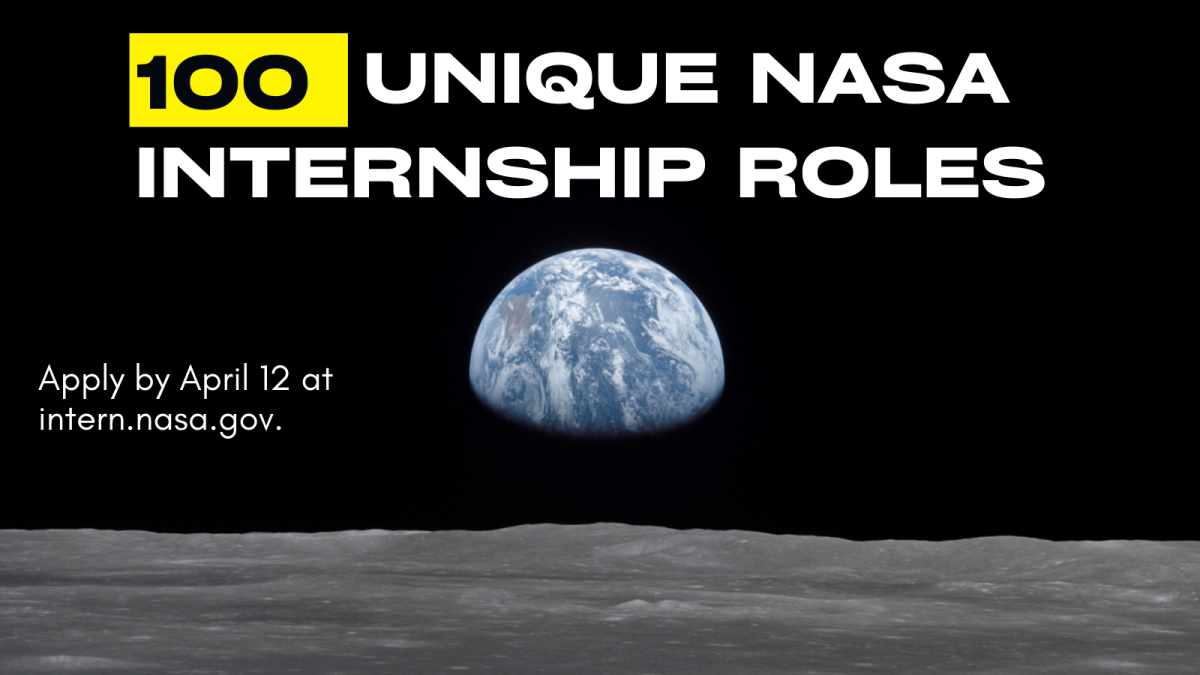NASA is entering a new era of space exploration. Through the Artemis program, NASA will land the first woman and person of color on the Moon. The advances made in our return to the lunar surface will later pave the way for human exploration of Mars—taking humanity further than ever before.
Helming this new era of exploration is the Artemis Generation. Like the Apollo Generation before them, these star-sailors are the pioneers of tomorrow and bring forth a new golden age of space discovery.
The Artemis Generation begins now, with us. The NASA interns of today are the Artemis leaders of tomorrow. We interviewed two current interns to better understand their thoughts on the future of NASA and their roles with Artemis.
MACKENZI HAUB | Pathways Intern at NASA’s Johnson Space Center

How has your internship at NASA contributed to your understanding of the Artemis mission and Artemis Generation?
As an intern, I have had the opportunity to meet some of the most courageous, quick-witted, observant problem solvers in the world. For example, my mentor, Jerry Condon, taught me more about Artemis and space travel than I could have ever imagined I would learn in a three-month timespan. Every time we spoke, I felt like I had learned a new component of spaceflight and mission planning. I learned about lunar craters, rocket propulsion, moon dust, and so much more.
During my project, I learned about lighting on the lunar surface and how it will affect Artemis III mission availability due to visibility issues during the landing of the Human Landing System (HLS), the vehicle that will bring humans back to the lunar surface for the first time in over 50 years. Jerry gave me a lot of control over the project and was very encouraging through all the learning curves I faced. He is a perfect example – one of many– of how NASA is fostering the Artemis Generation.
Interns come in with new minds and new ideas on how to solve problems. This is encouraged and celebrated at NASA. A new idea is never frowned upon. The Artemis Generation has a lot of work to do, and past NASA generations are doing a great job paving the way for us to contribute to the next several years’ worth of spaceflight innovation.

In what ways do you think the Artemis program is shaping the future for the next generation of space enthusiasts and professionals?
In a world where everything is fast paced and viewed on a screen, we need to make sure the Artemis program continues to be filmed and presented to the younger generations. Photos of the Moon from Orion during Artemis I, live feed of the Space Launch System rocket during launch, videos of the Artemis II crew training to return to the Moon… these are all essential in growing the next generation. Nothing excites my nephew more than the fire from a rocket as it leaves Earth. He doesn’t know exactly how important that fire is yet, but as long as we continue showing the younger generations the wonder that is spaceflight, I have no doubt that he will itch to learn more one day.
DOMINIQUE CRESPO | Pathways Intern at NASA’s Johnson Space Center

How has your internship at NASA contributed to your understanding of the Artemis mission and Artemis Generation?
Throughout my internship, I have seen the Artemis II crew go through many milestones, from the day they were announced, to their media opportunities around the world, and their growth as astronauts and individuals every day here at NASA’s Johnson Space Center. The Artemis program’s integrity has immersed itself in my everyday life – I see the impact the program has on students and the NASA workforce as the human contribution to meet such an advanced end goal has become an inspiration to many. Inspiring the youth to reach for the stars has become a prominent duty of mine. As a part of the Artemis Generation, I believe this program and its missions will change the future of space exploration and become the blueprint for young dreamers to take us further and further.
How has your experience as an intern in this program influenced your career aspirations and interest in the field?

Being an intern in public affairs has changed my mindset in many ways, especially since I work so closely with our astronaut corps. The Artemis program has inspired me to push further in my career and has given me the opportunity to see the power and intelligence humans hold in space exploration. I feel honored to be able to be one of the people behind the scenes who shares Artemis with the public, and the program itself is something that I am extremely proud to be a part of. As an intern, I view myself as one of the many reasons why students think it is possible to be a part of the agency, and I take pride in knowing that I give our youth hope in their futures as a part of the space program.
Want to join us and play a leading role in the Artemis Generation? Apply for a NASA internship at intern.nasa.gov
Gracie Glover/NASA Headquarters


